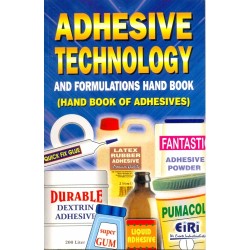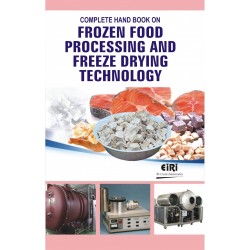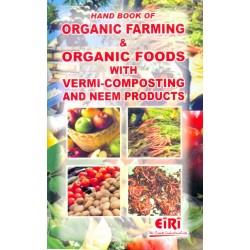eBook on Plastic Additives Technology
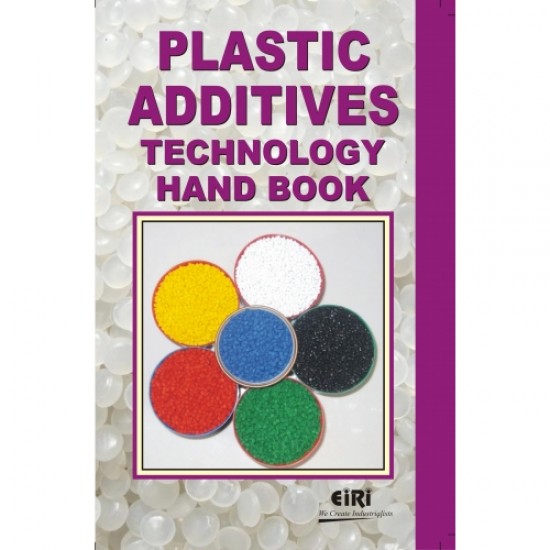
- More than 40 years of experience
- Managed by expert industrial consultants
- ISO 9001-2015 Certified
- Registered under MSME, UAM No: DL01E0012000
- 24/5 Research Support
Get your quesries resolved from an industry expert. Ask your queries before report or book purchase. - Custom Research Service
Speak to the our consultant to design an exclusive study to serve your research needs. - Quality Assurance
All reports are prepared by highly qualified consultants & verified by a panel of experts. - Information Security
Your personal & confidential information is safe & secure.
Chapter 1
Introduction
- Scope
- Definitions
- Additives
- Plastics
- Chemical structure of
- Different Types of
- Plastic Additives
- Accelerators
- Accelerator BBTS
- Accelerator MBT, MBT/MG
- Akroform ETU-22 PM
- Accelerator CBTS NEW
- Activator OT Urea
- Cure-Rite® IBT
- Accelerator EZ & EZ-SP
- Antifoams
- SF100
- Antidegradants
- Akrochem Antiox 12
- Ethanox® 314
- Santoflex® IPPD
- Santoflex® 77PD
- Santoflex® 6PPD
- Antioxidants
- Alkanox® P27
- Antioxidant 60
- BLS® 234 NEW
- Alkanox® TNPP
- Antioxidant S
- BLS® 292 NEW
- Alox® PP18 NEW
- 2-(2H-Benzotriazol-2-yl)-4,6-
- bis(1-methyl-1-
- phenylethyl)phenol NEW 11
- BLS® 1622 NEW
- BLS® 1944 NEW
- 2-tert-Butyl-6-(5-chloro-2Hbenzotriazol-
- 2-yl)-4-
- methylphenol NEW
- Cyanox® 1790
- BNX 1077 NEW
- 4,4'-Butylidenebis(6-tert-butylmcresol)
- NEW
- Cyanox® 2246
- BNX 1225TPR NEW
- Cyanox® 1212
- Cyanox® 425
- Cyanox® LTDP
- Diethyl 3,5-Di-tert-butyl-4-
- hydroxybenzylphosphonate
- NEW
- 1,3-Diphenyl-2-thiourea
- NEW
- Cyanox® STDP
- N,N’-Diethylthiourea NEW
- Distyryl biphenyl NEW
- Dibenzylhydroxylamine
- NEW
- O,O’-Dioctadecylpentaerythritol
- distearyl
- bis(phosphile) NEW
- 1,3-Di-o-tolylguanidine NEW
- 3,9-Bis(2,4-dicumylphenoxy)-
- 2,4,8,10-tetraoxa-3,9-
- diphosphaspiro[5,5]
- undecane NEW
- Dipentamethylenethiuram
- tetrasulfide NEW
- 2,6-Di-tert-butyl-4-ethylphenol
- NEW
- 2,6-Di-tert-butylphenol
- NEW
- Ethanox® 330
- Ethaphos® 368
- Ethanox® 310
- Ethanox® 376
- 2,2'-Ethylidene-bis(4,6-di-tertbutylphenol)
- NEW
- Ethanox® 323
- Ethanox® 702
- 2-(2'-Hydroxy-3',5'-di-tertamylphenyl)
- benzotriazole NEW
- Ethanox® 703
- Irganox® 245
- Irganox® 1035
- Irganox® 1425 WL
- Irganox® 259
- Irganox® 1081
- Irganox® 3125
- Irganox® 565
- Irganox® 1098
- Irganox® 3144 FF
- Irganox® E 201
- Isonox® 232
- Markstat® 60
- Irganox® MD 1024
- Lowinox® AH25
- Naugard® 412S
- Isonox® 132
- Lowinox® CPL
- Naugard® 445
- Lowinox® TBM-6
- Naugard® 635 NEW
- Naugard® 956
- Naugard® HM-22
- Naugard® PHR
- Naugard® A
- Naugard® J
- Naugard® PS-30
- Naugard® B-25
- Naugard® NBC
- Naugard® PS-35
- Naugard® BHT
- Naugard® PANA
- Naugard® Q Extra
- Naugard® RM-51
- Naugard® XL-1
- Bis(2,2,6,6-tetramethyl-4-
- piperidyl) sebacate
- NEW
- Naugard® Super Q
- Propyl gallate NEW
- 2,2'-(2,5-thiophenediyl)
- bis(5-tert-butylbenzoxazole)
- NEW
- Santicizer® 278
- Ultranox® 626
- Antiozonants
- Akrochem® NIBUD
- Akrowax™ 195 NEW
- Blowing Agents/Blowing
- Agents, Plasticizer
- CPW-100
- Celogen® AZ
- Celogen® RA NEW
- Coupling Agents
- Silquest® A-187
- Silquest® A-1102
- Silquest® A-137
- Silquest® A-1100
- Silquest® A-1289
- Silquest® A-2171
- Cross-linking Agents
- F-300, F-1000, F-1500,
- F-2000, F-3000
- Perkacit® MBTS
- Perkacit® ZDEC
- Perkacit® DPG
- Perkacit® NDBC
- Perkacit® MBT
- Resimene® 3520
- Flame Retardants
- Aroclor® 1221
- 2,2',4,4'-Tetrabromodiphenyl
- ether
- 2,2',4,4',6-Pentabromodiphenyl
- ether
- Aroclor® 1232
- 2,2',4,4',5-Pentabromodiphenyl
- ether
- Aroclor® 1016
- Aroclor® 1242
- 2,2',4,4',5,5'-Hexabromodiphenyl
- ether
- Aroclor® 1248
- Aroclor® 1268
- Aroclor® 6050
- Aroclor® 1254
- Aroclor® 5432
- Decabromodiphenyl ether
- Aroclor® 1260
- Aroclor® 5442
- Firemaster BP4A
- Aroclor® 1262
- Aroclor® 5460
- Halowax 1000
- Halowax 1001
- Halowax 1013
- Halowax 1051
- Halowax 1099
- Saytex® 8010 NEW
- m-Terphenyl
- o-Terphenyl
- p-Terphenyl
- Tetradecachloro-mterphenyl
- Tetradecachloro-oterphenyl
- Tetradecachloro-pterphenyl
- Plasticizers
- Benzoflex® 2-45
- Bisphenol A (BPA)
- Celogen® SD-125
- Citroflex 2
- Citroflex 4
- Citroflex A-2
- Citroflex A-4
- Citroflex B-6
- Cresyl diphenyl phosphate
- NEW
- Dibutyl phthalate
- Dibutyl sebacate NEW
- Diisooctyl phthalate NEW
- Dimethyl adipate NEW
- Dimethyl sebacate NEW
- Dioctyl phthalate (DOP)
- Disflamoll® TKP NEW
- Disflamoll TP NEW
- 2-Ethylhexyl sebacate
- NEW
- Bis(2-Ethylhexyl)
- terephthalate NEW
- Hercoflex® 900
- Hi-Point® 90
- Hi-Point PD-1
- Jayflex® 77
- Jayflex® DIDP
- Jayflex® DINP
- Jayflex® DTDP
- Jayflex® L11P-E
- Jayflex® TINTM
- Laurex®
- Markstat® 51
- Methyl O-Acetylricinoleate
- NEW
- Morflex® 150
- Morflex® 190
- Morflex® 560
- Morflex® x-1125
- Paraplex® G-30
- Plasthall® DINP plasticizer
- NEW
- Plasthall® ESO
- Polycizer® butyl oleate
- Polycizer® DP 500
- Santicizer® 141
- Santicizer® 148
- Santicizer® 160
- Santicizer® 261
- Tributylphosphate NEW
- Triethylphosphate NEW
- 2,2,4-Trimethyl-1,3-
- pentanediol-isobutyrate
- NEW
- Trimellitate NEW
- Vinsol® powder
- Vinsol® resin
- Processing aids
- Akrochem® Ceresin
- Wax NEW
- Kemamide® E ultra
- Retarders
- Akrochem® Retarder
- BAX NEW
- 2-Cyano-2-propyl
- benzodithioate NEW
- 4-Cyano-4-(phenylcarbonothioylthio)
- pentanoic acid NEW
- 2-Cyano-2-propyl dodecyl
- trithiocarbonate NEW
- 4-Cyano-4-[(dodecylsulfanylthiocarbonyl)
- sulfanyl]
- pentanoic acid NEW
- Cyanomethyl dodecyl
- trithiocarbonate NEW
- Cyanomethyl methyl(phenyl)
- carbamodithioate
- NEW
- 2-(Dodecylthiocarbonothioylthio)-
- 2-
- methylpropionic acid
- NEW
- Bis(dodecylsulfanylthiocarbonyl)
- disulfide
- NEW
- Retarder AK
- Bis(thiobenzoyl) disulfide
- NEW
- Stearates
- Stearic Acid RG (rubber
- grade)
- Stearic Acid TP
- UV stabilizers
- Tinuvin® PED
- Uvinul® 3000
- Uvinul® 3008
- Uvinul® 3040
- Uvinul® 3049
- Deuterated Compounds
- Dibenzylphthalate-d4
- Di-n-butyl phthalate-d4
- Di-iso-butyl phthalate-
- 3,4,5,6-d4
- Diethyl phthalate-
- 3,4,5,6-d4
- Diethyl phthalate-
- 3,4,5,6-d4
- Di-n-hexyl phthalate-
- 3,4,5,6-d4
- Di-n-hexyl phthalate-
- 3,4,5,6-d4
- Di-n-octyl phthalate-
- 3,4,5,6-d4
- Di-n-pentyl phthalate-
- 3,4,5,6-d4
- Di-n-propyl phthalate-
- 3,4,5,6-d4
- Bis(2-ethylhexyl) phthalate-
- 3,4,5,6-d4
Chapter 2
Antiblock and Slip Agents
- Antiblocking Agents
- Antiblock Agent for
- Polyolefin Films
- Talc antiblock
- compositions and
- method of preparation
Chapter 3
Antioxidants
- Description
- Phenolics
- Organophosphites
- Synthesis of
- Phosphorochloridite
- 1a and Phosphorodichloridite 2a
- Thioesters
- Deactivators
- Recent developments
- Suppliers
- Trends and forecasts
Chapter 4
Antistatic Agents
- Description
- External Antistats
- Dust Test Method
- Trends and forecasts
Chapter 5
Biocides
- Description
- Preparation
- Method
- Suppliers
- Trends and forecasts
Chapter 6
Chemical Blowing Agents
- Description
- Physical blowing agents
- Chemical blowing agents
- Polycarbonic Acid
- Trends and Forecasts
Chapter 7
Coupling Agents
- Description
- Silanes
- trans-2-methylcyclopentylsilane
- Titanates
- Trends and Forecasts
Chapter 8
Flame Retardants
- Description
- Reactive flame retardants
- Brominated Hydrocarbons
- Phosphate esters
- Chlorinated hydrocarbons
- Antimony Oxide
- Aluminum Trihydrate
- Other flame retardants
- Inorganic phosphates
- Melamines
- Magnesium hydroxide
- Molybdenum compounds
- Zinc Borate
- Driving Forces
Chapter 9
Heat Stabilizers
- Description
- Primary heat stabilizers
- Mixed metal stabilizers
- Lead Heat Stabilizers
- Secondary heat stabilizers
- Alkyl/aryl organophosphites
- Epoxy Compounds
- Beta diketones
- Polyfunctional Alcohols
- Trends and Forecasts
Chapter 10
Impact Modifiers
- Description
- Methacrylate-butadiene-styrene (MBS)
- Acrylonitrile-butadienestyrene (ABS)
- Acrylics
- Acrylic Sheet Production
- Chlorinated polyethylene (CPE)
- Ethylene vinyl acetate (EVA)
- Ethylene propylene diene monomer (EPDM)
- Maleic anhydride grafted EPDM
Chapter 11
Light Stabilizers
- Description
- Benzophenone
- Preparation
- Benzotriazole
- Benzoates and Salicylates
- Nickel Organic Complexes
- Hindered Amine Light
- Stabilizers (HALS)
- Suppliers
- Trends and Forecasts
Chapter 12
Lubricants and Mould Release Agents
- Description
- Lubricants
- Metallic stearates Esters
- Fatty Amides
- Synthetic Protocols
- Cis-9,10-octadecenoamide
- Trans-9,10-octadecenoamide
- Cis-8,9-octadecenoamide
- Cis-11,12-octadecenoamide
- Oleic acid
- Erucamide
- Methyl-8-hydroxyoctanoate
- Methyl-8-bromooctanoate
- Methyl-8-triphenylphosphoranyloctanoatebromide
- Methyl-cis-8.9-octadecenoate
- Cis-8,9 octadecenoic Acid
- 18-Hemisuccinate-cis-9,
- 10-octadecenoamide
- Methyl-9-bromononanoate
- Methyl-9-triphenylphosphoranylnonanoate-bromide
- Methyl-18-t-butyldiphenysilyloxy-cis-9,10 octadecenoate
- 18-T-butyldiphenylsilyloxycis-
- 9,10-octadecenoic Acid
- 18-T-butyldiphenylsilyloxycis-
- 9,10-octadecenoamide
- 18-Hydroxy-cis-9,10-octadecenoamide
- Synthesis of
- Compound 100
- Methyl-9-bromo-nonanoate
- (Intermediate for Compound 100:)
- 9-T-butyldiphenylsilyloxynonanal
- (Intermediate for Compound 100:)
- Methyl-9-triphenylphosphoranylnonanoate
- Bromide
- (Intermediate for Compound 100:)
- Methyl-18-t-butyldiphenysilyloxy-
- cis-9,10-
- octadecenoate
- (Intermediate for Compound 100:)
- 18-T-butyldiphenylsilyloxy-cis-
- 9,10-octadecenoic Acid (Compound 100:)
- Fatty Alcohols
- Waxes
- Mould Release Agents
- Fatty Acid Esters and Amides
- Fluoropolymers
- Silicones
- Suppliers
- Trends and forecasts
Chapter 13
Nucleating Agents
- Description
- Types
- Substituted sorbitols
- Low Molecular Weight Polyolefins
- Sodium benzoate
- Ionomer Resins
- Suppliers
- Trends and forecasts
The book Plastic Additive Technology Hand Book covers Introduction, Antiblock and Slip Agents, Antioxidants, Antistatic Agents, Biocides, Chemical Blowing Agents, Coupling Agents, Flame Retardants, Heat Stabilizers, Impact Modifiers, Light Stabilizers, Lubricants and Mold Release Agents, Nucleating Agents.
Preface
Every activity in modern life is influenced by plastics and many depend entirely on plastics products. Imagine cars without synthetic bumper, dashboards, steering wheels and switches; medicine without plastic hypodermic syringes and artificial hip joints. And what about telecommunications, dependent on plastic telephones, circuit boards and cable insulation. Our entertainment and leisure relies on the unique combination of characteristics offered by plastics in sports equipment and clothing, CDs, video and audio tape, television and cinema - indeed you wouldn't be able to read this over the internet without plastics! All these plastics products are made from the essential polymer mixed with a complex blend of materials known collectively as additives. Without additives, plastics would not work, but with them they can be made safer, cleaner, tougher and more colourful. Additives cost money, of course, but by reducing production costs and making products last longer, they help us to save money and conserve the world's precious raw material reserves. In fact, our world today would be a lot less safe, a lot more expensive and a great deal duller without the additives that turn basic polymers in to useful plastics. One way to improve the performance characteristics of plastic products is to compound resins with additives and fillers. Additives help fight against factors such as heat, chemicals or light. There are thousands of additives/fillers on the market today. Below are some of the most common ones used in manufacturing: • Antimicrobials: Used to control the build up of bacteria, fungi and algae on the surface of plastic products. A wide range of chemical and natural compounds are used as antimicrobials. An example would be naturally occurring silver ions used in products such as cell phones or organic acids in food-related products.
• Antioxidants: Used to control the degradation of products due to exposure to air.
• Antistatics: Used to minimize static electricity. These types of additives can be mixed with the resin or applied to the surface of the product. Antistatic additives are common to a wide variety of products ranging from cosmetics to industrial goods to sensitive electronic parts.
• Electrostatic Induction: Used for the economical and even application of polyurethane paints to consumer goods such as automobiles, bicycles and others.
• Fibers: Used to increase strength and stiffness. The most common type of fibers added for strength would be carbon and glass. Glass-reinforced plastic is more commonly known and marketed as fiberglass.
• Conductive fibers: Used to provide special properties for certain applications.
• Lubricants: Used for easier molding or for increased adhesion and viscosity of the molded parts.
• UV stabilizers: Used for the protection of the resin's mechanical properties by absorbing selective UV rays resulting in less degradation.
• Flame retardants/ Smoke suppressants: A variety of chemicals that can be added to resins to eliminate its tendency to burn. For polyethylene and similar resins, chemicals such as antimony trioxide and chlorinated paraffin are useful.
How to Make Project Report?
Detailed Project Report (DPR) includes Present Market Position and Expected Future Demand, Technology, Manufacturing Process, Investment Opportunity, Plant Economics and Project Financials. comprehensive analysis from industry covering detailed reporting and evaluates the position of the industry by providing insights to the SWOT analysis of the industry.
Each report include Plant Capacity, requirement of Land & Building, Plant & Machinery, Flow Sheet Diagram, Raw Materials detail with suppliers list, Total Capital Investment along with detailed calculation on Rate of Return, Break-Even Analysis and Profitability Analysis. The report also provides a birds eye view of the global industry with details on projected market size and then progresses to evaluate the industry in detail.
We can prepare detailed project report on any industry as per your requirement.
We can also modify the project capacity and project cost as per your requirement. If you are planning to start a business, contact us today.
Detailed Project Report (DPR) gives you access to decisive data such as:
- Market growth drivers
- Factors limiting market growth
- Current market trends
- Market structure
- Key highlights
Overview of key market forces propelling and restraining market growth:
- Up-to-date analyses of market trends and technological improvements
- Pin-point analyses of market competition dynamics to offer you a competitive edge major competitors
- An array of graphics, BEP analysis of major industry segments
- Detailed analyses of industry trends
- A well-defined technological growth with an impact-analysis
- A clear understanding of the competitive landscape and key product segments
Need Customized Project Report?
- Ask for FREE project related details with our consultant/industry expert.
- Share your specific research requirements for customized project report.
- Request for due diligence and consumer centric studies.
- Still haven't found what you're looking for? Speak to our Custom Research Team
About Engineers India Research Institute:
Note: We can also prepare project report on any subject based on your requirement and country. If you need, we can modify the project capacity and project cost based on your requirement.
Our Clients
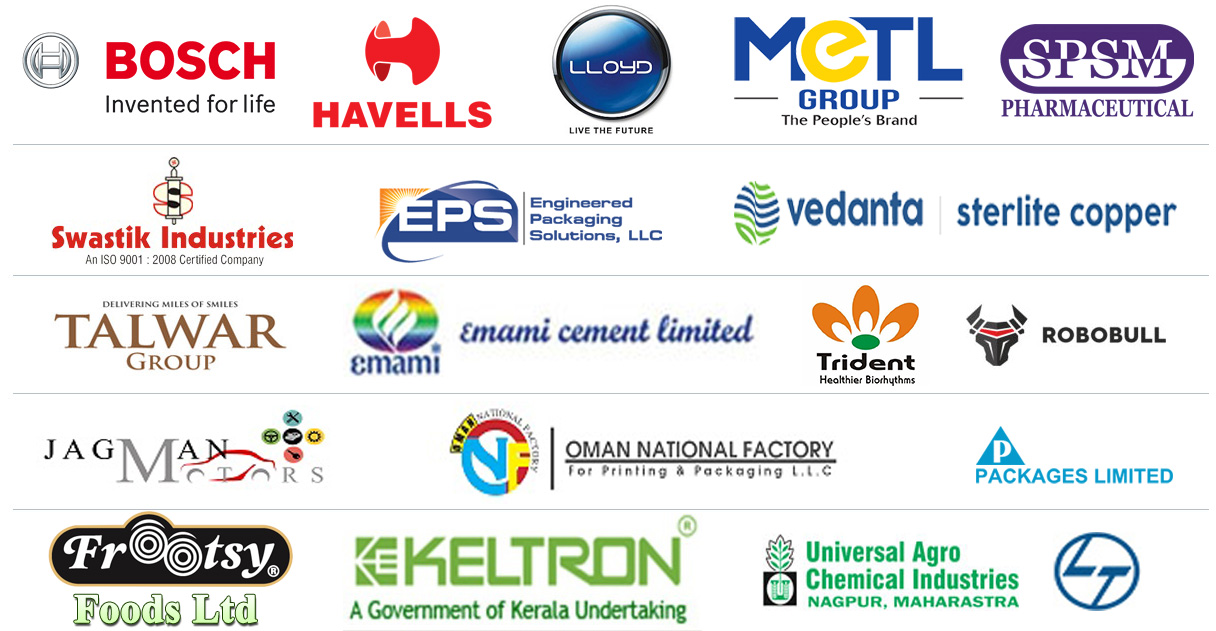
Our Approach
- Our research reports comprehensively cover Indian markets (can be modified as per your country), present investigation, standpoint and gauge for a time of five years*.
- The market conjectures are produced on the premise of optional research and are cross-accepted through associations with the business players
- We use dependable wellsprings of data and databases. What's more, data from such sources is handled by us and incorporated into the report
Why buy EIRI reports?
- Our project reports include detailed analysis that help to get industry Present Market Position and Expected Future Demand.
- Offer real analysis driving variables for the business and most recent business sector patterns in the business
- This report comprehends the present status of the business by clarifying a complete SWOT examination and investigation of the interest supply circumstance
- Report gives investigation and top to bottom money related correlation of real players/competitors
- The report gives gauges of key parameters which foresees the business execution





















